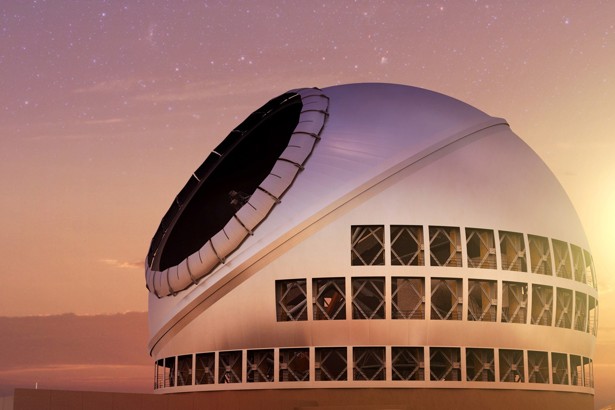
Astronomers in Hawaii say there’s nowhere else on the planet where a colossal telescope could peer into space with the clarity and depth of what’s possible from atop Mauna Kea, a massive volcano on the Big Island.
But the Hawaii Supreme Court says the state did not follow the proper process when they granted a construction permit to the University of Hawaii for the Thirty Meter Telescope. Specifically, the justices said Hawaii’s land board failed to hold a required hearing to evaluate a petition by groups that opposed the project.
“Quite simply, the Board put the cart before the horse,” the justices wrote in a ruling filed on Wednesday. “Accordingly, the permit cannot stand.”
The decision is a victory for those who oppose the telescope project, including some Native Hawaiians, activists, and other cultural practitioners. Mauna Kea is sacred to Hawaiians, and the site in question is designated state conservation land. For astronomers, the setback is crushing. “If TMT goes under, it will be absolutely devastating for Hawaii astronomy, which is to say Northern Hemisphere astronomy,” Doug Simons, an astronomer and the executive director of the Canada-France-Hawaii telescope on Mauna Kea, told me in October.
“We respect their decision,” Henry Yang, the chair of TMT’s board of directors, said in a statement on Wednesday. “We are assessing our next steps on the way forward.”
Construction was put on hold in April, and then again in June, when huge crowds of protesters blocked the roads leading up to the construction site. Unless TMT scraps the $1 billion observatory altogether, which is unlikely, the bitter fight is likely to continue. TMT could opt to pursue construction in another location, like Chile, but astronomers have made it clear that Mauna Kea is the only site that can achieve what TMT sets out to learn about the universe. The high court’s ruling sends the project back to the land board for a new hearing.
The fight over the future of Mauna Kea has mystified many observers, especially outside of Hawaii. Elsewhere, Hawaii’s complex and controversial history of land use—and the extent to which that history permeates local politics—is rarely appreciated or even understood.
Last year, George Johnson, a columnist for The New York Times, compared Hawaiians to the Catholics who condemned Galileo for his scientific pursuits. Johnson turned to Steve Lekson, a professor of anthropology and curator of archaeology at the University of Colorado Museum of Natural History, who saw things differently: “Given that the U.S.A. was founded on two great sins—genocide of Native Americans and slavery of Africans—I think science can afford this act of contrition and reparation,” Lekson told him.
Johnson made it clear that he did not agree with this view, and his column elicited a response from Bianca Isaki, the board secretary of Kahea, an environmental group in Hawaii environmental.
“Indigenous peoples’ actual, meaningful, and historied presence on lands with scientific value are not merely permitted by your colleagues’ ‘act of contrition’—or even federal protections for Native graves,” she wrote on the Kahea blog. “For you, this shared world of multiple meanings is hidden in plain sight and even a thirty-meter telescope will not help you see this.”